


The Future Of Comfort And Efficiency

Smart living spaces have emerged as a defining trend in the modern world, driven by advances in technology and the desire for more comfortable, efficient, and sustainable living. These spaces are a testament to our ability to integrate cutting-edge innovations into our homes, making daily life more convenient and enjoyable. In this article, we will explore what smart living spaces are, how they work, and the benefits they offer in shaping the way we live.
Defining Smart Living Spaces
Smart living spaces are residential environments equipped with integrated technology, automation, and intelligent systems. These systems can control and manage various aspects of daily life, from lighting and temperature to security and entertainment. The overarching goal is to create an environment that adapts to the needs and preferences of its inhabitants, while also promoting energy efficiency and sustainability.
Automation And Control
A central component of smart living spaces is automation and control. Homeowners can remotely manage and monitor their living spaces using smartphones, tablets, or voice-activated virtual assistants like Amazon's Alexa or Google Assistant. This level of control allows for real-time adjustments and customization, enhancing the overall living experience.
Energy Efficiency
Smart living spaces are designed with a strong focus on energy efficiency. They incorporate advanced heating and cooling systems that can be programmed to operate only when needed, reducing energy waste. Smart thermostats learn user preferences and create schedules that optimize comfort while minimizing energy consumption. Lighting systems can adjust brightness based on natural light levels, further reducing energy usage.
Security And Safety
Security is a paramount concern in smart living spaces. These spaces feature advanced security systems equipped with surveillance cameras, motion sensors, and smart locks. Homeowners can monitor their properties in real-time, receive alerts about unusual activity, and control access remotely. This level of security enhances peace of mind.
Entertainment And Convenience
Entertainment and convenience are also central to smart living spaces. Smart televisions, sound systems, and streaming devices can be controlled with voice commands or through a centralized app, creating an immersive and user-friendly experience. Smart appliances, such as refrigerators, ovens, and washing machines, offer convenience features that make daily tasks more efficient and enjoyable.
Customization And Personalization
One of the key benefits of smart living spaces is customization and personalization. These spaces are designed to adapt to the needs and preferences of their occupants. For example, smart lighting systems can create lighting scenes to match different moods or activities, and smart thermostats can create individualized heating and cooling schedules for each family member.
Future-Proofing Your Home
Investing in smart living spaces is a way to future-proof your home. Technology continues to evolve, and these spaces can adapt and incorporate new innovations as they become available. This adaptability ensures that your home remains relevant and efficient in an ever-changing world.
Smart living spaces are more than just a trend; they are a way of life. They represent a future where technology enhances our daily routines, promotes environmental responsibility, and offers a more comfortable and secure living environment. As we continue to embrace smart living, our homes will evolve to provide us with greater convenience, efficiency, and sustainability than ever before. The future is now, and it's time to make our living spaces smarter, more connected, and more responsive to our needs and desires.

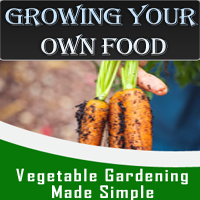
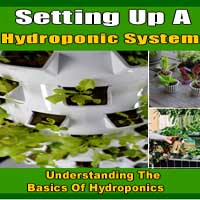

A Path To Sustainable Resource Management
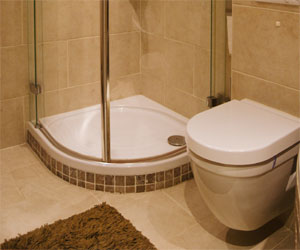 Effective Water Conservation Methods
Effective Water Conservation Methods
Fixing Leaks: One of the most basic yet crucial methods is fixing leaks in plumbing systems. A dripping faucet or a leaky pipe can waste significant amounts of water over time.
Low-Flow Fixtures: Installing low-flow faucets and showerheads is an effective way to reduce water consumption without compromising water pressure or functionality.
Dual-Flush Toilets: Dual-flush toilets provide two flushing options, allowing users to select a lower volume for liquid waste and a higher volume for solid waste.
Irrigation Efficiency: Employing efficient irrigation systems, such as drip irrigation and soaker hoses, can reduce water use in landscaping. Additionally, watering during cooler parts of the day helps minimize evaporation.
Rain Barrels And Cisterns: Collecting rainwater in barrels or cisterns can provide a free source of water for outdoor use, such as watering gardens and lawns.
Landscaping Practices: Using native plants and xeriscaping, a landscaping technique that conserves water, can significantly reduce the need for irrigation.
Creative Solutions For Limited Space
 1. Embrace Vertical Space
1. Embrace Vertical Space
One of the most effective ways to increase storage in a small home is by utilizing vertical space. Install tall bookshelves, wall-mounted cabinets, and floating shelves. These not only provide additional storage but also draw the eye upward, creating a sense of height and spaciousness.
2. Multifunctional Furniture
Invest in furniture that serves multiple purposes. Sofas with hidden storage, beds with built-in drawers, and coffee tables with lift-up tops are just a few examples of multifunctional pieces that can help you declutter your space. These items provide hidden compartments for your belongings, reducing the need for extra storage units.
3. Underutilized Spaces
In small homes, every nook and cranny counts. Look for underutilized spaces, such as the area under the stairs, beneath the bed, or inside closets. These spaces can be transformed into storage solutions like built-in shelves, pull-out drawers, or hanging racks.
4. Declutter Regularly
Living in a small home requires a commitment to decluttering regularly. Go through your belongings and be ruthless in your decision to keep, donate, or discard items that you no longer need or use. The less you have, the easier it is to organize and store what remains.
Creating A Beautiful And Thriving Garden
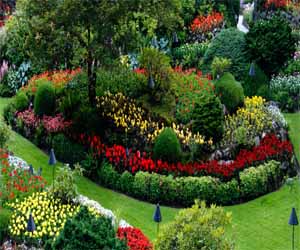 Assess Your Garden Conditions: Before you begin selecting plants, it's essential to assess your garden's conditions. Consider factors like sunlight, soil type, moisture levels, and climate. Some plants thrive in full sun, while others prefer shade. Some can tolerate dry conditions, while others need consistently moist soil. Understanding your garden's unique environment is the first step in making informed plant selections.
Assess Your Garden Conditions: Before you begin selecting plants, it's essential to assess your garden's conditions. Consider factors like sunlight, soil type, moisture levels, and climate. Some plants thrive in full sun, while others prefer shade. Some can tolerate dry conditions, while others need consistently moist soil. Understanding your garden's unique environment is the first step in making informed plant selections.
Define Your Garden's Purpose: What do you want to achieve with your garden? Are you looking to create a lush, private retreat, or do you aim to grow a bountiful vegetable garden? The purpose of your garden will greatly influence your plant selection. For example, a meditation garden may focus on fragrant and low-maintenance plants, while a vegetable garden will prioritize edible crops.
Choose Plants That Thrive In Your Climate: Plants that are native or well-suited to your climate are more likely to thrive. Native plants are adapted to the local conditions and require less maintenance. They also support local wildlife and pollinators.
Consider Growth Patterns: When selecting plants, consider their growth habits. Some plants are compact and tidy, while others can be sprawling or invasive. Be mindful of how each plant will fit into your garden's design and its potential impact on nearby plants.
Balance Aesthetics: Think about the visual appeal of your garden. Balance is essential. Choose a variety of plants that offer different colors, textures, and heights.
A Step Toward Sustainable Living
 Why Environmentally Mindful Cleaning Matters
Why Environmentally Mindful Cleaning Matters
Traditional cleaning products often contain harsh chemicals and synthetic fragrances that can have adverse effects on our health and the environment. These chemicals, when washed down the drain, find their way into waterways, harming aquatic life and affecting the quality of our drinking water. Moreover, indoor air pollution caused by the release of volatile organic compounds (VOCs) from cleaning products can lead to respiratory problems and other health issues.
Environmentally mindful cleaning is about recognizing the interconnectedness of our actions. It's not just about making our immediate surroundings cleaner; it's about preserving the planet for future generations. By making eco-conscious choices in our cleaning routines, we can significantly reduce our ecological footprint and contribute to a healthier world.
The Green Cleaning Revolution
The shift towards environmentally mindful cleaning practices has given rise to a green cleaning revolution. This movement encourages the use of natural, non-toxic, and sustainable alternatives to conventional cleaning products. Some of the key elements of this revolution include:
Natural Ingredients: Many common household items like vinegar, baking soda, lemon juice, and essential oils can serve as powerful cleaning agents. They are safe, effective, and readily available.
Reducing Plastic Waste: Eco-friendly cleaning often involves the use of refillable and reusable containers, reducing the need for single-use plastic bottles that can take hundreds of years to decompose.
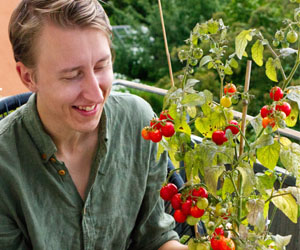 Growing your own food is not just a trend; it's a way of life that offers a plethora of benefits for individuals, communities, and the planet.
Growing your own food is not just a trend; it's a way of life that offers a plethora of benefits for individuals, communities, and the planet.
The Resurgence Of Home Gardening
In recent years, there has been a significant resurgence in home gardening. People from all walks of life are rediscovering the joy and satisfaction that comes with nurturing a garden and producing their food. Whether you have a sprawling backyard or just a tiny balcony, there's a way to grow something that will grace your table with fresh, homegrown flavors.
The Joys Of Growing Your Own Food
One of the most immediate and rewarding aspects of growing your own food is the connection you establish with the earth. As you till the soil, plant seeds, and watch your crops grow, you become part of the natural world's cycles. The joy of seeing a tiny seed sprout into a thriving plant and, eventually, bearing fruits or vegetables is a deeply gratifying experience. It's a tangible connection to the earth's rhythms.
Nutrition And Health Benefits
Homegrown produce is not only delicious but also healthier. You have control over what goes into your garden, which means you can choose to grow organic, pesticide-free food. This translates into fresh, nutrient-rich produce that you can pick at the peak of ripeness, ensuring the highest levels of vitamins and minerals. Additionally, the physical activity and fresh air involved in gardening contribute to a healthier lifestyle.
Environmental Impact
Growing your own food is a sustainable and environmentally friendly practice.
Exploring Soil-Based Farming
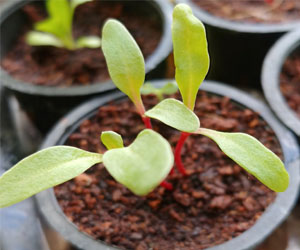 The Natural Nutrient Cycle
The Natural Nutrient Cycle
Soil-based farming taps into the natural nutrient cycle of the Earth. Organic matter, decaying plants, and animal waste enrich the soil with essential nutrients such as nitrogen, phosphorus, and potassium. These nutrients are absorbed by plants, providing the foundation for growth. Soil acts as a reservoir, storing water and nutrients, which are gradually released to plants as they need them. This natural cycle fosters a self-sustaining and ecologically friendly agricultural system.
Advantages Of Soil-Based Farming
Nutrient-Rich Soil: Over time, well-managed soil-based systems accumulate organic matter and nutrients, enhancing soil fertility.
Crop Diversity: Soil-based farming supports a wide range of crop varieties, catering to diverse dietary needs and regional preferences.
Sustainability: It promotes ecological balance by maintaining soil health and supporting diverse microbial life in the soil.
Cost-Efficiency: Soil-based farming often requires less initial investment compared to high-tech alternatives like hydroponics.
Resilience: Soil-based systems are more resistant to power outages or equipment failures, ensuring consistent food production.
Challenges And Adaptations
While soil-based farming has been a cornerstone of agriculture, it's not without its challenges. Soil erosion, nutrient depletion, and water pollution are concerns that require attention.